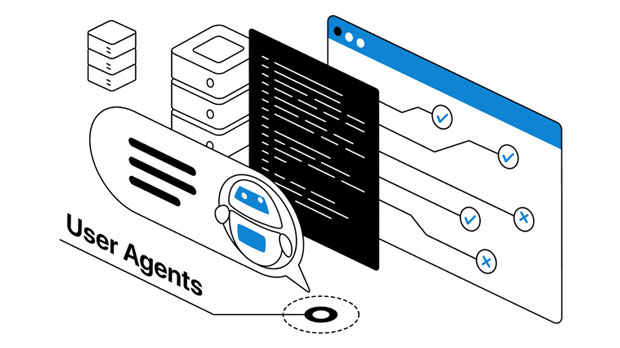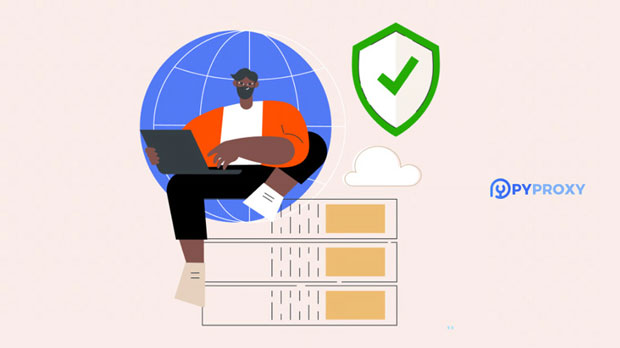How to prevent mobile IP proxies from being recognized and blocked by websites?
In the era of advanced security measures and ever-evolving online protocols, using mobile ip proxies has become an essential tool for many businesses and individuals. These proxies offer a way to protect user identity and bypass geographic restrictions, but they are not immune to detection. Websites employ various methods to identify and block mobile IP proxies, which can lead to frustrating experiences and hinder the purpose of using these proxies. This article explores strategies and techniques to prevent mobile IP proxies from being detected and blocked by websites, ensuring smoother operations for users relying on these technologies. Understanding Mobile IP Proxies and Their VulnerabilityMobile IP proxies refer to IP addresses that are assigned by mobile network providers, often through cellular data networks. These proxies are highly dynamic, meaning that the IP addresses are frequently rotated or reassigned. While this is beneficial for hiding the user's real IP address, it can also be a double-edged sword. Websites and online platforms often employ sophisticated algorithms to detect abnormal traffic patterns or IP addresses that do not match typical user behavior.One of the primary reasons mobile IP proxies are vulnerable to detection is the unique characteristics of mobile data. For example, mobile IP addresses can exhibit unusual patterns, such as rapid changes in location, inconsistent geolocation, or access from unexpected geographic regions. Furthermore, many mobile proxies share IP addresses across multiple users, creating a larger footprint that can be flagged by security systems. This makes it essential for users to take extra precautions to avoid detection.Techniques for Preventing Detection and Blocking of Mobile IP Proxies1. Regular Rotation of IP AddressesThe most fundamental step in preventing mobile IP proxies from being detected is to ensure that the IP addresses are frequently rotated. Static IPs or long-term use of the same IP can quickly raise suspicion. By implementing frequent IP rotation, you mimic the behavior of legitimate users who frequently switch their internet connections, reducing the chances of detection.For mobile proxies, this means using systems that provide regular IP changes, preferably with no noticeable pattern. Some systems may offer a pool of IPs, which will allow you to distribute traffic across multiple addresses, making it harder for websites to trace and identify a specific user.2. Use Residential Mobile ProxiesResidential mobile proxies are generally harder for websites to detect due to the fact that they are sourced from real devices rather than data centers. These proxies use genuine mobile devices connected to cellular networks, making them appear like real user traffic. Unlike traditional data center IPs, which are commonly flagged, residential mobile proxies help mitigate detection risks by blending in with regular mobile traffic.The advantage of residential mobile proxies lies in their ability to simulate real user behavior, such as location consistency, frequent reboots, and the use of regular mobile data. These attributes make it difficult for websites to distinguish between legitimate users and those using proxies, making them a reliable choice for avoiding blocking.3. Implement Slow and Controlled Request PatternsRapid, high-volume requests from the same IP address can quickly trigger alarms on a website, leading to temporary or permanent blocking of that IP. To prevent detection, it is important to control the speed and volume of requests made through the proxy.One effective method is to mimic the browsing patterns of regular users. Instead of making hundreds of requests per second, spread the traffic over time to simulate natural user behavior. Introducing delays between requests, such as waiting a few seconds before loading the next page, can help maintain the appearance of legitimate usage. This slow and controlled approach can significantly reduce the likelihood of being flagged by anti-bot systems.4. Geo-Location Consistency and Natural MovementGeolocation is one of the most reliable methods websites use to detect proxy usage. If a user continuously accesses a website from widely varying geographic locations, it raises red flags. To avoid detection, it is crucial to maintain consistency in the geolocation of the mobile ip proxy. Using a proxy that stays within a specific geographic region helps avoid suspicion. Additionally, when switching locations, it is recommended to follow a natural progression. For example, if accessing a site from one city, ensure that the next IP is from a nearby region rather than jumping across continents. This avoids triggering the security algorithms that monitor for inconsistent geolocation data.5. Masking Proxy FingerprintsIn addition to IP addresses, websites can use other identifying factors, such as browser fingerprints, to detect proxy use. These fingerprints include information about the user’s device, operating system, browser type, and even screen resolution. By combining this information with IP data, websites can identify patterns that suggest the use of a proxy.To prevent this, you can use tools or software that help mask or rotate browser fingerprints. By periodically changing browser characteristics, such as the user agent string, screen resolution, and plugins, you can avoid detection methods that rely on these non-IP factors. This makes it harder for websites to associate a particular session with a proxy.6. Avoiding Shared Proxy NetworksShared proxies, especially those used by multiple users at the same time, are easily detectable. Websites can track a range of activity associated with shared proxies and flag them as suspicious. To minimize the risk of detection, it is important to avoid using proxies that are shared with a large number of users.Instead, consider using private or dedicated mobile proxies. These proxies are allocated to a single user, ensuring that there is no overlap in usage. Since the activity associated with a private proxy is confined to one user, the risk of triggering detection algorithms is significantly reduced.7. Avoiding Known Proxy and VPN IP RangesMany websites maintain databases of known proxy and VPN IP ranges. If your mobile IP proxy falls within one of these ranges, it will likely be flagged. To prevent this, always ensure that the IP addresses you use are from legitimate, non-blacklisted sources.This can be achieved by regularly updating the list of IP addresses in use and ensuring that they have not been flagged by popular anti-proxy services. Many advanced systems allow users to select IPs that are less likely to be included in these databases, reducing the chance of detection.ConclusionPreventing mobile IP proxies from being detected and blocked requires a combination of techniques that enhance the anonymity and legitimacy of the proxy usage. Regular IP rotation, using residential mobile proxies, controlling request patterns, maintaining geo-location consistency, masking fingerprints, avoiding shared proxies, and steering clear of known proxy ip ranges are all strategies that can help reduce the likelihood of detection.By implementing these methods, businesses and individuals relying on mobile IP proxies can enjoy more seamless and uninterrupted access to websites, while mitigating the risks associated with proxy detection and blocking. The key is to simulate real user behavior as closely as possible, ensuring that the proxy traffic appears legitimate to the websites being accessed.
2025-02-17
























































